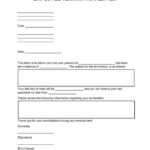
A dryer sheet found unexpectedly in your mailbox is not trash; it’s a tactic reportedly used by mail carriers and postal workers to deter pests like wasps and yellow jackets from nesting inside mailboxes. The aromatic compounds in dryer sheets, specifically linalool, are believed to repel these insects, offering a simple, cost-effective solution for postal employees frequently exposed to stinging insects.
For postal workers facing the constant threat of stings, a dryer sheet represents a proactive measure to prevent potential harm. Wasps and yellow jackets, in particular, are known to build nests in dark, sheltered locations, making mailboxes an ideal spot. Pest control experts suggest that while the scientific evidence is limited, the anecdotal evidence from postal workers suggests dryer sheets can be an effective deterrent. According to Nancy Troyano, PhD, a board-certified entomologist with Ehrlich Pest Control, “many people report that dryer sheets can help keep mice, certain insects, and other pests away.” The key compound suspected of repelling these pests is linalool, commonly found in dryer sheets and many insect repellents.
The placement of a dryer sheet is a quick and non-toxic method compared to using insecticides. It provides a barrier of scent that may discourage insects from entering the mailbox. This is especially helpful during peak nesting seasons in the spring and summer months. While the precise mechanism isn’t fully understood, the strong scent is thought to interfere with insects’ ability to locate nesting sites or may simply be unpleasant to them.
Dryer sheets are readily available and inexpensive, making them an accessible solution for postal workers and homeowners alike. This is especially crucial for those with allergies to insect stings or those seeking a safer alternative to chemical pesticides. The practice also minimizes the risk of direct contact with potentially aggressive insects, which can become defensive when their nesting sites are disturbed.
The use of dryer sheets highlights a practical, real-world application of everyday items to solve common problems. It reflects a deeper understanding of insect behavior and the utilization of scents as a natural deterrent. While this method may not be foolproof, the collective experience of postal workers suggests that it can significantly reduce the likelihood of insect infestations in mailboxes, contributing to a safer and more comfortable work environment. Furthermore, homeowners who experience similar pest issues with their mailboxes might find this a helpful and harmless solution.
The trend of using dryer sheets underscores the importance of sharing practical knowledge and innovative solutions within communities. It exemplifies how simple remedies can have a significant impact on everyday challenges. While further research is needed to fully understand the effectiveness of dryer sheets as pest repellents, the anecdotal evidence and practical benefits make it a worthwhile consideration for anyone dealing with insects in enclosed spaces. This method not only protects postal workers but also offers a user-friendly alternative for homeowners seeking non-toxic pest control options.
The potential effectiveness of dryer sheets in repelling pests from mailboxes raises questions about other applications for this simple solution. For instance, could dryer sheets be used in other enclosed spaces, such as sheds or garages, to deter insects? Could different types of dryer sheets, with varying scents and chemical compositions, have different levels of effectiveness? These questions highlight the need for further investigation into the use of dryer sheets as a versatile and eco-friendly pest control method.
The practice of using dryer sheets in mailboxes also opens up a broader discussion about the role of human observation and anecdotal evidence in scientific discovery. While rigorous scientific studies are essential for validating claims and understanding mechanisms, the collective experiences of individuals can provide valuable insights and lead to new avenues of research. In this case, the widespread adoption of dryer sheets by postal workers suggests that there is a real-world phenomenon worth exploring, even if the scientific basis is not yet fully established.
Ultimately, the dryer sheet phenomenon serves as a reminder that practical solutions to everyday problems often come from unexpected sources. It encourages us to be open to unconventional ideas and to share our experiences with others, as these shared insights can lead to more effective and sustainable ways of addressing common challenges. As more people become aware of the potential benefits of using dryer sheets as pest repellents, it is likely that this practice will continue to spread, providing a simple and accessible solution for dealing with insects in enclosed spaces. The key takeaway is that sometimes, the most effective solutions are the simplest ones, hiding in plain sight in our everyday lives.
The utilization of dryer sheets extends beyond merely repelling insects; it underscores an adaptive response to environmental challenges. Mail carriers, often working independently and over vast terrains, require accessible and efficient solutions. The dryer sheet, light, readily available, and non-toxic, fits this need perfectly. This contrasts with more complex, expensive, or environmentally harmful alternatives, highlighting the appeal of simple, sustainable solutions.
Moreover, the practice emphasizes the value of community knowledge sharing. The diffusion of this tactic among postal workers likely occurred through informal channels, such as word-of-mouth and shared experiences. This type of grassroots knowledge dissemination underscores the importance of fostering communities of practice, where individuals can exchange information and learn from each other’s experiences. This collaborative approach can lead to innovative solutions that might not be discovered through traditional research methods.
The focus on linalool as the active ingredient also highlights the growing interest in natural pest control methods. As concerns about the environmental and health impacts of synthetic pesticides increase, there is a growing demand for safer and more sustainable alternatives. Linalool, a naturally occurring compound found in many plants, offers a potentially less harmful option for repelling pests. While more research is needed to fully understand its effectiveness and safety, its use in dryer sheets suggests a promising avenue for developing new pest control products.
The potential limitations of using dryer sheets as pest repellents should also be considered. The effectiveness of this method may vary depending on the type of dryer sheet used, the species of insect being targeted, and the environmental conditions. For example, dryer sheets with stronger scents may be more effective at repelling insects than those with weaker scents. Similarly, some insects may be more resistant to linalool than others. Additionally, the scent of dryer sheets may fade over time, requiring regular replacement to maintain their effectiveness.
Despite these limitations, the use of dryer sheets as pest repellents remains a valuable and practical solution for many people. Its simplicity, accessibility, and non-toxic nature make it an attractive alternative to more complex and potentially harmful pest control methods. As more research is conducted on the effectiveness of dryer sheets and other natural pest repellents, we can expect to see even more innovative and sustainable solutions emerge in the future. The key is to remain open to new ideas and to continue to share our experiences with others, so that we can collectively develop more effective and environmentally friendly ways of managing pests.
The dryer sheet method also brings to light the human element in practical problem-solving. Faced with a recurring issue, mail carriers leveraged an easily accessible resource to improve their working conditions. This showcases the ingenuity and resourcefulness often found in everyday occupations. It’s a testament to how individuals can adapt and find solutions using what’s readily available, rather than relying solely on commercially produced products or expert interventions.
Further exploration could examine regional variations in this practice. Are dryer sheets more commonly used in certain climates or geographic areas where specific insect species are more prevalent? This could provide valuable insights into the effectiveness of this method under different environmental conditions. Moreover, exploring alternative scent-based deterrents could yield even more effective solutions. Essential oils, for example, contain a variety of aromatic compounds that have been shown to repel insects. Investigating the use of essential oil-infused materials could lead to the development of more potent and longer-lasting pest repellents.
The anecdotal success of dryer sheets also highlights the limitations of relying solely on scientific studies. While rigorous research is essential for validating claims and understanding mechanisms, it often lags behind real-world practices. In this case, the widespread adoption of dryer sheets by postal workers suggests that there is a genuine phenomenon worth investigating, even if the scientific evidence is still limited. This underscores the importance of combining scientific rigor with practical observation and anecdotal evidence to develop more effective and relevant solutions.
Ultimately, the dryer sheet story is a reminder that innovation can come from unexpected places. It encourages us to be open to new ideas, to share our experiences with others, and to recognize the value of practical knowledge. As we continue to grapple with the challenges of pest control and environmental sustainability, it is essential to embrace a diverse range of approaches, from scientific research to grassroots innovation. By combining these efforts, we can develop more effective, sustainable, and equitable solutions for managing pests and protecting our environment.
The discussion about dryer sheets raises questions about the potential impact of their widespread use on the environment. While dryer sheets are generally considered to be non-toxic, they do contain chemicals that could potentially leach into the environment. Further research is needed to assess the environmental impact of using dryer sheets as pest repellents, particularly in terms of their effects on soil, water, and non-target organisms.
Moreover, the use of dryer sheets as pest repellents highlights the broader issue of human-wildlife conflict. As human populations continue to grow and encroach on natural habitats, conflicts with wildlife are becoming increasingly common. Finding ways to minimize these conflicts while protecting human health and safety is a major challenge. The dryer sheet method represents one small step in this direction, but more comprehensive and sustainable solutions are needed. This requires a multi-faceted approach that includes habitat conservation, public education, and the development of effective and humane pest management strategies.
The trend of using dryer sheets also underscores the importance of empowering individuals to take action to address environmental challenges. By providing people with simple, accessible, and effective solutions, we can encourage them to become more engaged in protecting the environment. This requires a shift away from top-down, prescriptive approaches towards more participatory and collaborative models of environmental governance. By involving communities in the decision-making process and providing them with the tools and knowledge they need to take action, we can create a more sustainable and equitable future for all.
In conclusion, the use of dryer sheets as pest repellents is a fascinating example of how practical solutions can emerge from unexpected sources. It highlights the value of community knowledge sharing, the importance of natural pest control methods, and the need for a more holistic approach to environmental management. While more research is needed to fully understand the effectiveness and environmental impact of this method, its widespread adoption suggests that it has the potential to make a significant contribution to pest control and environmental sustainability. By remaining open to new ideas and continuing to share our experiences with others, we can collectively develop more effective and sustainable solutions for managing pests and protecting our environment. The simple act of placing a dryer sheet in a mailbox serves as a reminder that even the smallest actions can have a positive impact on the world around us.
Frequently Asked Questions (FAQ)
Q1: Why are dryer sheets being placed in mailboxes?
A1: Dryer sheets are reportedly being placed in mailboxes by mail carriers and postal workers to deter pests, particularly wasps and yellow jackets, from building nests inside. The scent, especially linalool, is believed to repel these insects. According to Nancy Troyano, PhD, a board-certified entomologist with Ehrlich Pest Control, “many people report that dryer sheets can help keep mice, certain insects, and other pests away.”
Q2: What is linalool, and why is it important?
A2: Linalool is a naturally occurring fragrant alcohol found in many plants and essential oils, as well as in dryer sheets. It is believed to be the primary component in dryer sheets that repels insects. It’s a common ingredient in insect repellents due to its strong scent, which can disrupt insects’ ability to locate nesting sites or simply be unpleasant to them.
Q3: Is there scientific evidence that dryer sheets repel insects?
A3: While anecdotal evidence from postal workers suggests that dryer sheets can be effective, rigorous scientific studies are limited. However, the presence of linalool, a known insect repellent, in dryer sheets lends credibility to the claim. More research is needed to fully understand the effectiveness and mechanisms involved. Nancy Troyano, PhD, mentions “many people report that dryer sheets can help keep mice, certain insects, and other pests away.”
Q4: Are dryer sheets a safe alternative to insecticides?
A4: Dryer sheets are generally considered a safer, non-toxic alternative to insecticides, especially for those with allergies or sensitivities. They provide a barrier of scent that may discourage insects without the use of harmful chemicals. However, the environmental impact of long-term dryer sheet use should be considered, and further research is needed.
Q5: How often should dryer sheets be replaced in mailboxes?
A5: The frequency with which dryer sheets should be replaced depends on the type of dryer sheet used and environmental conditions. Generally, replacing them every few weeks or once a month is recommended to maintain their effectiveness, as the scent can fade over time. Monitoring the presence of insects in the mailbox can help determine the optimal replacement schedule.









